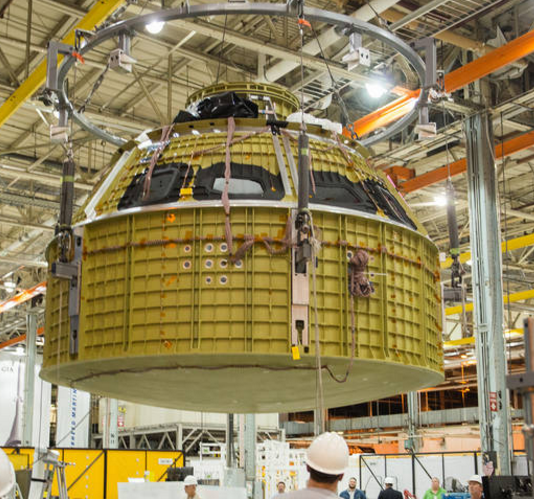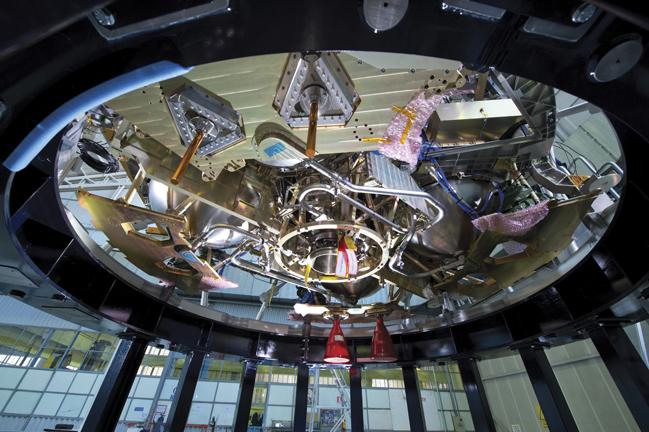 Have you ever noticed that children, upon being asked what they want to do when they grow up, often respond with the most difficult professions possibly attainable? It all seems so possible when you are five. I want to be President. I want to be a neurosurgeon. I want to be an astronaut. As we grow older, we discover that attaining any of these prestigious titles–along with a multitude of others–requires extraordinary brain power, nearly a lifetime of dedication, and a lot of effort.
Have you ever noticed that children, upon being asked what they want to do when they grow up, often respond with the most difficult professions possibly attainable? It all seems so possible when you are five. I want to be President. I want to be a neurosurgeon. I want to be an astronaut. As we grow older, we discover that attaining any of these prestigious titles–along with a multitude of others–requires extraordinary brain power, nearly a lifetime of dedication, and a lot of effort.
To become an astronaut, yes, you need the degree(s) in engineering or science, piloting experience, and must pass all the physicals. But if you are planning to go into space, along with understanding the sense of danger involved, you might need to be prepared to live in some tight and uncomfortable quarters. While that was definitely the case when our men first went to the moon, we are a bit more spoiled today, and sending our astronauts off in a space where they can’t even extend their legs during flight seems a bit tortuous. So as NASA works diligently to get to Mars via Project Orion, and the world waits greedily for news on what they are doing, new design ideas are being considered–and 3D printing fits in predominantly–all around.
With the Soyuz system (a capsule design from 1968) still serving as a prime model, engineers have considered what changes they could possibly make to include more comfort, and have come up with what they consider to be ‘a limousine’ compared to previous models. The cylindrical service model will encompass all of the propulsion system plus house four crew, their air and water, and provide a cone-shaped module where they will sit.
“This is a design and a shape that we can be completely confident will work,” said Mike Kirasich, NASA’s program manager for Orion at the agency’s Johnson Space Centre in Houston.
While the service module is being provided by the European Space Agency due to an agreement regarding collaboration and the ISS, NASA is going all out in the creation of a new launcher, which draws on designs of the past–and the future. A number of components have been 3D printed for the engines and have undergone successful testing so far, via Aerojet Rocketdyne, the company awarded a contract to restart production of RS-25D engines–and is setting the standards for 3D printed rocket engines. This is of course where metal 3D printing comes into play and shows its potential for what could be considered extreme situations, assuming that extraordinary temperatures–and outer space–qualify.
Aerojet Rocketdyne is using 3D printing technology–as they have been for many years–not on the main engines, but on the smaller ones ‘studding’ the capsule’s surface. They are specifically using this technology to fabricate the rocket nozzle extensions, due to speed involved, allowing for the components to be produced 40% faster. With twelve nozzles in total, they were made in just several weeks.
According to Jay Littles, director of Advanced Launch Vehicle Propulsion, Rocketdyne has understood the value of additive manufacturing far longer than most realize, and has actually been putting it to use for 20 years on aerospace projects.
“What sets us apart from someone just buying a 3D printer is that we understand the process from start to finish, from feed powders, to the optimised machine process parameters, to the resulting material microstructures and material properties,” he said.
While the 3D printed engines have indeed passed a number of tests successfully, the nozzles themselves will be subjected to a wide range of inspections and tests before they can actually be installed on a crewed capsule. They are slated to go on the capsule for Exploration Mission-1 as the ultimate test before a crew is involved.
We’ve been following the saga of Orion for quite some time now, and obviously will continue to for years, from futuristic new spacesuits to rocket components–to a multitude of discussions on how 3D printing may allow for construction of self-sustainable habitats in space. Exploration Mission-1, a test sending an unmanned capsule in 2018, will be one of the final tests before an actual crew is sent into space. At that point, all components can be evaluated and refined if necessary.
So while designs of the past may still play an integral part in the design, power, and even safety of astronauts, it certainly appears that new technologies like 3D printing play a crucial part in what is actually going to get us to Mars–and offer sustainability once we get there. And with an actual crewed mission not happening for years, one can only imagine what new tools and technology might come along in the meantime. Tell us your thoughts on the Orion mission and the technology being used, over in the 3D Printing and NASA’s Project Orion forum on 3DPB.com.
[Source: The Engineer]Subscribe to Our Email Newsletter
Stay up-to-date on all the latest news from the 3D printing industry and receive information and offers from third party vendors.
You May Also Like
Profiling a Construction 3D Printing Pioneer: US Army Corps of Engineers’ Megan Kreiger
The world of construction 3D printing is still so new that the true experts can probably be counted on two hands. Among them is Megan Kreiger, Portfolio Manager of Additive...
US Army Corps of Engineers Taps Lincoln Electric & Eaton for Largest 3D Printed US Civil Works Part
The Soo Locks sit on the US-Canadian border, enabling maritime travel between Lake Superior and Lake Huron, from which ships can reach the rest of the Great Lakes. Crafts carrying...
Construction 3D Printing CEO Reflects on Being Female in Construction
Natalie Wadley, CEO of ChangeMaker3D, could hear the words of her daughter sitting next to her resounding in her head. “Mum, MUM, you’ve won!” Wadley had just won the prestigious...
1Print to Commercialize 3D Printed Coastal Resilience Solutions
1Print, a company that specializes in deploying additive construction (AC) for infrastructure projects, has entered an agreement with the University of Miami (UM) to accelerate commercialization of the SEAHIVE shoreline...
































